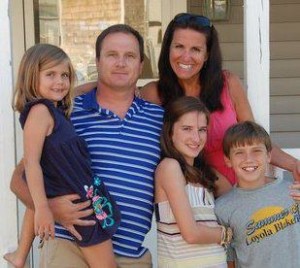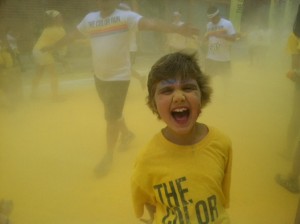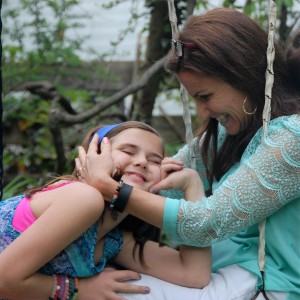By Val Walker
It can be difficult to break out of isolation after the loss of someone dear to us. It takes an enormous amount of courage, hope and energy to reach out and find the support we need. Typical self-help tips and quick fixes for getting “out there” and finding “your people” might not offer the best solutions for a grieving person. Indeed, we might not even want solutions at all—maybe we just want a little comfort.
As a former rehabilitation counselor for 18 years, supporting my clients as they braved through major life losses, I often reminded them to be patient with themselves. It takes time to “get back out there” and get to know people we can trust and count on. In vulnerable stages of grieving, feeling anxious, tentative and alone, it’s easy to give up quickly on new connections when they don’t seem genuine enough, or warm enough. Instead, staying home feels so much better with Netflix, a cat in our lap, and a nice warm drink. Eventually, however, bored with the emptiness of our isolation, we might muster up the wherewithal to get out again. Hopefully, each time we try a new meet-up or social event, it gets easier to make new friends.
Fortunately, even one solid relationship can make all the difference in making our lives feel normal again, and restoring our confidence. I’ve heard inspiring success stories of rebuilding support after loss, and learned that certain attributes in people tended to help grieving people more than others.
I’d like to offer practical wisdom from grief support group participants who shared reassuring stories of connections that helped them live with loss. Above all, they insisted, the key to choosing a supportive group or person is to feel safe, accepted and “heard.” It is a healing experience to be able to sit with a person or a group who listens, acknowledges and validates our experience. We each have a unique and personal way of grieving, and it is essential that no one pushes us to “get over it,” or go through our grief in any “right” way. According to the Hospice Foundation of America, we might never completely recover from a loss, but we can learn to live with loss in our own way. We know we are in the presence of a truly comforting person when we feel encouraged to be ourselves in times of uncertainty, doubt and transition.
Essential qualities of people who are comforting for others:
Attentive listeners: We feel heard.
Empathic: We sense they feel what we feel. They “get it” on a deeper level.
Patient: We don’t feel rushed to “get over” our loss.
Nonjudgmental, open-minded: We feel free to express what is true for us. They don’t tell us what to think or do.
Reliable: They keep their commitments (and don’t overpromise): We can count on them.
Warm, kind, compassionate: They smile and welcome us. They put us at ease, or show affection.
Genuine: They mean what they say, even when they say, “I don’t know what to say.”
Hopefully, we might turn to a friend or family member who has a few of these comforting qualities. But if we need to find more support, there are ways to meet comforting people in our communities.
Here are two of the most effective approaches for grieving people to rebuild social support:
Grief Support Groups and Individual Grief Counseling
Hospices, hospitals, behavioral health agencies, and other centers for loss offer support groups and counseling facilitated by a licensed social worker or trained grief counselor. (At the very least, these organizations can give referrals to support groups and counselors.) In a natural, unpressured way, grieving people in a support group can meet others who have much in common, and who understand and value their experience of loss. With a support group or an individual counselor, we feel accepted, and reassured that we are not alone. Once we break through our sense of isolation, it’s easier to take the next, brave steps to reaching out to others in our community for friendship and fellowship.
I’d like to add that for me, personally, even though I was a counselor, after my loss, I needed grief support groups to restore my confidence and courage to get out and socialize again. On top of that, as an introvert, I was highly sensitive to any group of people. As superficial and cold as the world could feel, it was just too easy to give up and give in to isolation unless I had a trusted support group helping me keep the faith. Facebook, social media, and typical social meet-ups were not enough for finding solid, reliable people to count on. Being well-connected didn’t mean being well-supported. Even though I had a hundred friends on Facebook, and a hundred more colleagues, building relationships I could count on was the most difficult task I’ve had to master in life. Yet to be honest, it’s also been the most rewarding.
Volunteering
We can meet like-minded and comforting people in organizations where people share their compassion, wisdom and generosity. We can join a group with a sense of purpose and fellowship, even for just a few hours a month. There are hundreds of causes, missions and projects that need us. If we are still grieving, it’s important to choose a volunteer opportunity that best reflects what is truly life-affirming for us as a person. Grieving people have shared with me that what is rewarding as a volunteer is what makes meaning in their lives. “Meaning-making” activities are key. In short, whatever we do as a volunteer, it’s best when it feels authentic, purposeful and right for us. It could involve music, nature, animals, history, serving others, deeper learning, or creating community. In volunteer settings where we are “in our element,” we can meet people who welcome and engage us. And eventually, over the weeks and months, new friendships can develop.
Other Popular Ways Grieving People Rebuild Support (in face-to-face interaction):
Religious and Spiritual Activities, Retreats: Ideally, there is comfort in gathering together to share a sacred experience.
Sports: Yes, bonding surely happens as part of a team or a group of fans!
Learning: Classes, Study Groups, Workshops, Continuing Education, Community Education. When we’re passionately interested in a topic, we’re breaking through our isolation and following our calling to new people, places and things.
Animal Companions and Therapy Animals: Shy or anxious people can connect better with humans when their animal companions are with them.
Exploring, Traveling, and Hosting other Travelers: A sense of wonder and adventure has a way of connecting us with others.
Social Activism, Advocacy: There is plenty of injustice, stigma and inequality we can face when we team up with fellow activists and advocates. We don’t feel alone when we come together for a cause.
Expression through the Arts or Arts Therapies: Joining in a song or dance, we lose ourselves in the magic of the moment. Before we know it, we’re feeling better.
The list above is not complete, but many grieving people I’ve known have transformed their lives by taking part in any one of these social experiences. Hopefully, we find the right, comforting kinds of people as we step into our new endeavors with an open mind and a willingness to explore and learn.
The most comforting people I’ve ever met have lived through great losses in their own lives. Those who have learned to live with loss are the ones we are fortunate to meet in our quest to rebuild our support networks. Whether we are singing in a choir, or volunteering at a food pantry, or watching a ball game with neighbors, comforting people are often there to help us break through our fear and awkwardness. They come from all cultures, backgrounds and ages. We might be surprised. They will welcome us with a radiant smile, and recognize us because they have been through grief and loneliness themselves.
Hopefully, we won’t shy away for too long.
 Val Walker, MS, is the author of The Art of Comforting: What to Say and Do for People in Distress(Penguin, 2010), and a Nautilus Book Award Gold Medalist in 2011. The Art of Comforting was listed as recommended reading by the Boston Public Health Commission’s Guide for Survivors of the Marathon Bombing. Val’s articles have appeared in Whole Living Magazine, AARP Bulletin, Coping with Cancer Magazine, and other national publications. Formerly a rehabilitation counselor, she now works as an activities specialist leading groups for seniors with Alzheimer’s, and other groups with disabilities. To learn more about Val you can visit her website, Comforting in Action.
Val Walker, MS, is the author of The Art of Comforting: What to Say and Do for People in Distress(Penguin, 2010), and a Nautilus Book Award Gold Medalist in 2011. The Art of Comforting was listed as recommended reading by the Boston Public Health Commission’s Guide for Survivors of the Marathon Bombing. Val’s articles have appeared in Whole Living Magazine, AARP Bulletin, Coping with Cancer Magazine, and other national publications. Formerly a rehabilitation counselor, she now works as an activities specialist leading groups for seniors with Alzheimer’s, and other groups with disabilities. To learn more about Val you can visit her website, Comforting in Action.






